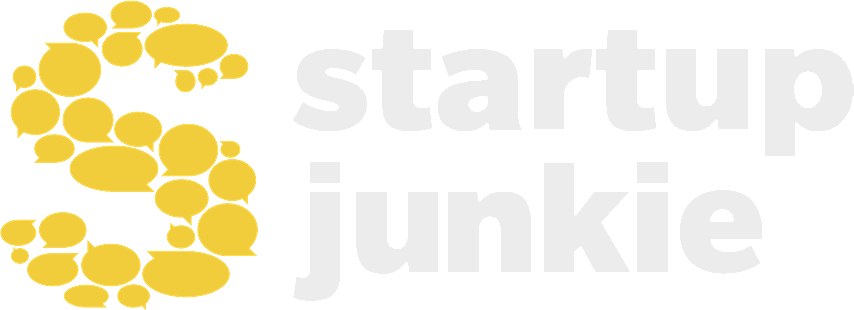The following is a guest post from Max Menke, founding partner at GrowthX.
For a startup, few things are more exciting than the opportunity of adding a big logo to your list of customers. Enterprise customers can provide a startup with a lot of credibility in the market, not to mention non-dilutive capital (i.e., revenue). But, more often than not, the promise of the big enterprise deal turns out to be an attractive mirage that only wastes valuable (and limited) runway.
Enterprise customers can yield a large deal. But, that larger deal most likely follows a complicated process and a slow pace (especially when compared to the pace of a startup). To be successful in acquiring enterprise customers, you must have patience and a systematic plan of how you are going to get to a signed five, six- or seven-figure contract.
If your Ideal Customer Profile is an enterprise, here are the 4 rules to follow:
-
Know who the right buyer is;
-
Reduce buyer friction;
-
Don’t give your customers homework; and
-
Know your math of sales.
Know Who The Right Buyer Is
When selling to enterprises, most startups make the mistake of selling to the company or the brand when they need to focus on selling to a specific economic buyer.
Companies don’t buy things. People do.
Enterprise sales requires founders to carefully navigate a labyrinth of roles, departments, budgets and decision makers. Without first identifying the specific department and economic buyer, enterprise sales cycles can drag on for over one year (especially if you’re relying on the customer to point you in the right direction internally).
To save time and increase your chances of success, identify exactly who you should be selling to within any organization before you enter it. This will clarify what you should say, how you should structure your sales process, what acute problems you are solving and how you should structure your pricing from pilot to full deployment.
Enterprises typically have multiple buyers, often with different balance sheets and competing priorities. Rather than attempt to build consensus, you should establish a beachhead by zeroing in on the one or two departments, and the specific people in those departments, who likely have the budget and authority to make an initial decision without asking for much by way of permission from senior stakeholders.
To identify your key economic buyer among all potential decision makers and influencers within an enterprise, you must first identify your Ideal Customer Profile (ICP). Click here to learn exactly what an ICP is, review a real-world ICP case study, and download our ICP template to start identifying your ICP today.
Reduce Buyer Friction
While corporations love to talk about innovation and technology, at the end of the day most try their hardest to avoid taking big risks. A common and avoidable misconception that many founders make is that the best path towards corporate adoption is to present a solution that addresses all of their needs.
While this go-to-market strategy presents the allure of a large-figure deal, it likely crosses between multiple decision makers and budget holders (i.e., herding cats). Also, even if the enterprise is an early-adopter (which they need to be to do business with a new, unproven startup), buyers will be more risk-averse where the risk exposure from a solution that purports to address multiple business problems is far greater.
There’s a saying in sales: no is the second-best answer; just get there quickly. Enterprises are larger, later-stage companies that require more processes that are designed to slow things down and minimize risk. Enterprise managers and executives might also honestly enjoy the new and refreshing experience of working with a startup. That hobby can entertain them while quickly draining your runway. This is where many startup go-to-market strategies die.
So what’s the right strategy? To sell to enterprise customers, make it incredibly simple for them to pilot your technology by directing them towards a cost effective, short-term pilot. This is what is otherwise known as a product-led growth strategy.
The smaller the budget to get started, the less people (i.e., decision makers, accountants, middle managers and lawyers) need to be involved. A $10,000 pilot contract doesn’t raise a whole lot of eyebrows if something goes wrong.
Think of the benefits from the perspective of your initial economic buyer. If you’re successful, the ROI and reasons for expansion should be undeniable and make them look good. If you’re unsuccessful, then the company just lost a small rounding error on the P&L.
The key to this strategy for founders is to design and meticulously implement a pilot that in a relatively short period of time (2-4 months) can clearly hit a defined success metric that matters to your economic buyer and can scale as the startup gets more business from the corporation.
Don’t Give Your Customers Homework
Your economic buyer and their team have their own full time job which means that in most cases they have no time to think about your product and all the ways they can make it work within their organization.
For example, have you ever had a sales opportunity with a large enterprise customer that looked and sounded like a great deal but then at some point you provided the potential customer with some options and they said they’d get back to you? What happened next? Did the entire process slowly grind to a halt? It’s not because they lost interest. It’s because you gave them control of the sales process which is not one of the jobs they’re measured by.
People at corporations are busy. They’re not going to read a white paper, fill out a spreadsheet, review the data or have sales conversations with others at the company for you.
A startup’s goal should be to provide white-glove service where they handle every detail of the sale and are a part of as many conversations as possible. Make it as easy and obvious as possible for your specific economic buyer to get to each step in your sales process and easily complete it without adding to their workload.
Nobody knows your business better than you do, so if you leave a spreadsheet or a meeting up to the enterprise, you will not see a successful outcome.
Enterprise sales can be tricky, but startups that sell in the way that enterprise customers are used to buying will set the foundation for a more successful sales process and gain their first enterprise customer.
Know Your Math of Sales
This final expert tip on how to win enterprise customers may sound obvious. But, we’ve seen countless founders around the world unintentionally make this simple-to-avoid (and often fatal) mistake.
Know your math of sales! Here’s your formula for success: make sure that your runway in months (i.e., cash divided by burn) is much greater than the number of months it will realistically take to sign an enterprise contract and get paid.
It’s not uncommon for enterprise sales deals to take 12 months or more to close. Add another 1-2 months to process your initial invoice and have it paid by a corporate accounting department. If you have 12-18 months of runway, then an enterprise customer is likely not your current ideal customer profile.
Setting this type of market milestone is a critical first step before getting too far down the path of trying to land an enterprise customer.
Conclusion
Enterprise customers can help you validate your product-development roadmap and go-to-market hypotheses. They serve as attractive customer logos for investors. And, most importantly, the revenue potential is highly attractive.
For startups with limited runway and where the priority is learning that precedes and leads to the right type of revenue, enterprise customers can also be akin to Greek sirens, the dangerous creatures that lured sailors with their enchanting music and voices to shipwreck on a rocky coast.
To avoid this fatal business outcome, make sure you: (1) know who your right buyer is, (2) reduce (and eliminate) buyer friction, (3) avoid giving your customers homework, and (3) know your math of sales.
Want to know whether enterprise customers are an ICP for your startup? We created an ICP Starter Kit to help you answer that exact question!
Our ICP Starter Kit has everything you need to take this important step for your business:
-
An on-demand workshop with step-by-step instructions for identifying your ICP, along with a real-world case study drawn from our venture capital fund portfolio); and
-
A downloadable template to apply what you’re learning to your company.
Click here to download it today!

